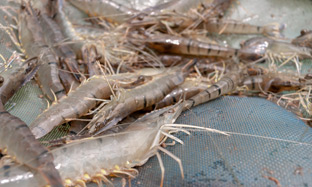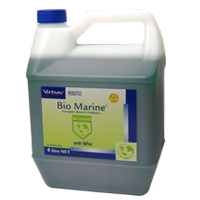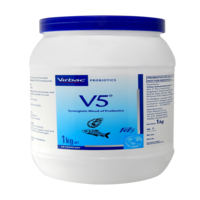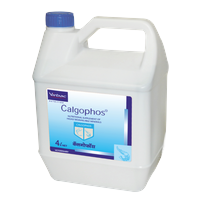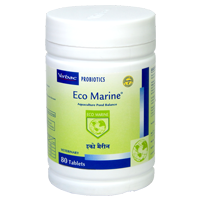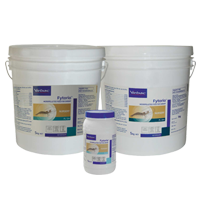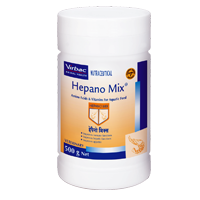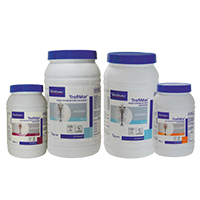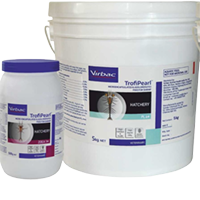
How to get optimum FCR in shrimp culture?
Cost of feed constitutes a major part of the production cost and accounts for 50% to 70% of the total variable cost.
The use of feeds will improve shrimp production and increase profits. The availability of nutrients from feeds depends on the type and quality of the raw material used, the formulation, the feed processing, feed storage conditions and feeding management. Therefore, feed and feeding practices for semi-intensive or intensive shrimp farming require a basic understanding of nutrition and feed requirements.
Shrimp diets may be supplementary or complete. In an extensive system the shrimps need a complete diet. Although natural food items have good conversion values but they are difficult to procure in large quantities and maintain a continuous supply.
At present most of the aquaculture farms depend on imported feed with an FCR (Food Conversion Ratio) of 1:1.5 - 1.8. The feeding could be done by using automatic feed dispensers, or by broadcasting all over the pond. If feeding trays are employed in selected pockets in the pond wastage in feed can be reduced.
Shrimp requires approximately 40 essential nutrients. These nutrients are provided in various amounts by natural food and supplemental feeds. Although the nutrition principles are similar for all animals, the quality and quantity of nutrient requirements vary from species to species.
The recommended levels of nutrients and dietary components for black tiger shrimp are listed in table below.
| Srimp size (gm) | 0.0 - 0.5 | 0.5 - 3.0 | 3.0 - 15.0 | 15.0 - 40.0 |
|---|---|---|---|---|
| Protein ( %) | 45 | 40 | 38 | 36 |
| Fat (%) | 7.5 | 6.7 | 6.3 | 6.0 |
| Fiber ( %) | Max 4 | Max 4 | Max 4 | Max 4 |
| Ash (%) | Max 15 | Max 15 | Max 15 | Max 15 |
| Moisture (%) | Max 12 | Max 12 | Max 12 | Max 12 |
| Calcium (%) | Max 2.3 | Max 2.3 | Max 2.3 | Max 2.3 |
| Phosphorus (%) | Min. 1.5 | Min. 1.5 | Min. 1.5 | Min. 1.5 |
(source: Lin 1994)
Shrimp consume dietary protein to obtain a continuous supply of amino acids for normal growth. About 20 major amino acids make up most of the proteins and 10 are essential including methionine, arginine, threonine, tryptophan, histidine, isoleucine, leucine, lysine, valine and phenylalanine.
Thus, essential amino acids must be provided in adequate quantities and qualities (well-balanced) in the diet. On the other hand, the recommended dietary protein levels for shrimp vary from 30 % to 55 % depending on the shrimp size and species. It is believed that post-larval shrimp require a higher protein level than larger shrimp.
The lipid requirement of shrimp depends on their essential fatty acids and phospholipid content. There are four fatty acids, which are considered essential for shrimp, namely linoleic (18:2n6), linolenic (18:3n3), eicosapentaenoic (20:5n3) and decosahexaenoic (22:6n3). In general, plant oils are high in 18.2n6 and 18.3n3, while the marine animal oils are high in 20:5n3 and 22:6n3.
The phospholipid requirement is 2 %; however if lecithin is used this level can be reduced to 1 %. The requirement for cholesterol ranges from 0.25 % to 0.4 %. In addition, the recommended lipid level ranges from 6.0 % to 7.5 % and the level should not exceed 10 %.
The utilization and metabolism of carbohydrates by shrimp are limited. Their type and level in the diet have been shown to affect shrimp growth. Starch as the carbohydrate source is utilized better than dextrin or glucose for Penaeus monodon.
Little is known about vitamin requirements in shrimp. In intensive farming, vitamins must be supplied in the diet for normal growth. Commercial shrimp feeds are usually over-fortified with vitamins to overcome shortfalls due to processing loss and feed storage.
The minimum requirement for vitamin C, which is easily lost, is about 50-150 ppm for Penaeus monodon.
Shrimp can absorb or excrete minerals directly from the aquatic environment via gills and body surfaces. The dietary requirement for minerals is largely dependent on the mineral concentration of the environment in which the shrimp are being cultured.
Among the other minerals, phosphorus is the most important, and is recommended at 0.9% as available phosphorus in the diet. Calcium is not considered to be a dietary essential. However, its level in feed needs to be monitored because it is important to maintain calcium to phosphorus ratio of 1:1 to 1:1.5. Calcium should not exceed 2.3% in the diet.
The use of good quality feed will improve shrimp production and profits, and minimize the environmental pollution from shrimp farming. The practical indicators of good quality feed are:
Feed Conversion Ratio (FCR)
An ideal FCR always results in model growth rate, healthy shrimp and clean pond bottom conditions. Only the superior quality of feed can achieve an FCR of 1.2. According to recent data, an FCR as low as 1.2 has been achieved, but many farmers are still obtaining FCRs of higher than 2.2. Therefore, besides the feeding management, the FCR is also closely related to the quality of feed.
The model quality shrimp feed must be highly palatable.
Since shrimp are a slow feeder animal, the water stability of suitable feed should be over 2 hours for Penaeus monodon.
Feed quality will rapidly deteriorate if feed is not packed well and properly stored. Feed should be stored in a dry, cool and well-ventilated place to maintain consistent moisture and temperature. Feed should not be stored in direct sunlight and should not be kept longer than 3 months from the time of processing. The spoiled or old feed should not be used.
A high FCR or high amount of feed required to produce unit weight gain indicates overfeeding, and consequently, a poor FCR is usually associated with poor growth rate, low weight gain, stressed shrimp, mediocre water quality and adverse pond bottom conditions. Therefore, the proper amount of feed is the most critical factor of feeding management.
| Shrimp Live Body Weight (g) | Recommended Feeding Rate (% body weight/day) |
|---|---|
| 2 - 3 | 8.0 - 7.0 |
| 3 - 5 | 7.0 - 5.5 |
| 5 - 10 | 5.5 - 4.5 |
| 10 - 15 | 4.5 - 3.8 |
| 15 - 20 | 3.8 - 3.2 |
| 20 - 25 | 3.2 - 2.9 |
| 25 - 30 | 2.9 - 2.5 |
| 30 - 35 | 2.5 - 2.3 |
| 35 - 40 | 2.3 - 2.1 |
The guidelines for feeding adjustment to be made according to the mean body weight of the shrimp are shown in table below. Since many factors are involved in shrimp feed consumption, careful and frequent observation of shrimp is the most reliable approach for determining the optimal feeding amount.

